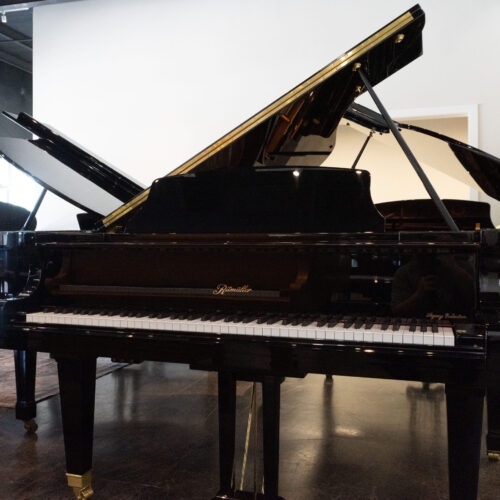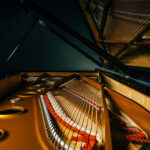The piano is one of the most popular instruments worldwide, and for a good reason. There are many new things to learn about the piano from the sound, different techniques, how a piano works, etc. Here are some five amazing piano facts that we’ve found that you may not know!
Synthesizers Go Back to the 1800s
The Telharmonium, an early electronic musical instrument, started in 1897, and it was pretty big. The Mark III version weighed 200 tonnes, to put into perspective. The Telharmonium played through the telephone system, and it had a home in the basement of the Metropolitan Opera House. However, the Telharmonium invented by Thaddeus Cahill got abandoned because it kept interfering with naval communications. Check out this video on the Telharmonium:
Harpsichord Strings Are Plucked and Clavichord Strings Are Hammered
Harpsichords and clavichords are both ancestors of the modern piano, but they sound very different. Harpsichords have a sharp, stringy sound, and Clavichords are relatively quiet. But their most significant difference is the mechanism: harpsichords have little quills on their hammers that pluck the strings, while clavichords use hammers. However, not all clavichord models have keys that can be played simultaneously. Watch this brief history of the piano:
The Most Expensive Piano Costs $3.22 million.
According to Broughton Pianos, the most expensive piano sold for $3.22 million. A private bidder bought the Heintzman piano at an auction. The most expensive piano on the market is the Steinway & Sons Pictures at an Exhibition piano. And Paul Wyse painted this was designed after the Modest Mussorgsky piano suite of the same name.
Bartolomeo Cristofori Invented The Piano
In their piano learning journey, everyone wonders who invented the incredible piano. Bartolomeo Cristofori invented the piano in the early 1700s in Italy. Fortepiano was the original name of the piano. Pianos back in that time were, of course, less advanced than they are now. However, the basics of the piano have always been the same. Fortepianos were more developed than a harpsichord, often having thicker strings and hammer action mechanisms. The early pianos could sustain notes, play dynamic levels, and play for concerts, like now!
Tuning A Piano After Moving
Your piano should be tuned if you move it anywhere different from where it usually is. Tuning the piano has less to do with the actual moving of the instrument and more to do with elements the piano will encounter in. the new environment. For example, most moving trucks could expose the piano to more humidity. Certain things like humidity can cause the piano parts to swell or loosen with prolonged exposure.
Conclusion
We hope you learned something new reading these 5 amazing piano facts you may not know! If you’re looking for the perfect piano for yourself or a loved one, come check us out at Miller Piano Specialists in Franklin, TN! If you have any questions about where to buy a piano for the best price, we are open! Our hours are Monday-Saturday from 10 am to 6 pm. We are happy to help you in person again, using all the guidelines we have been provided. We are here for you.











